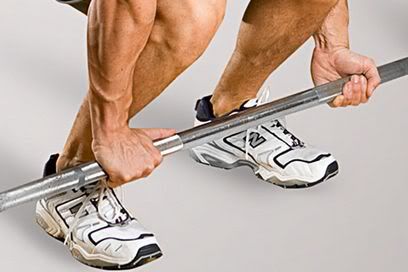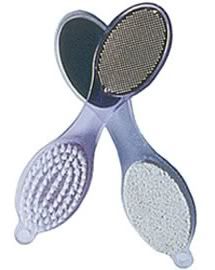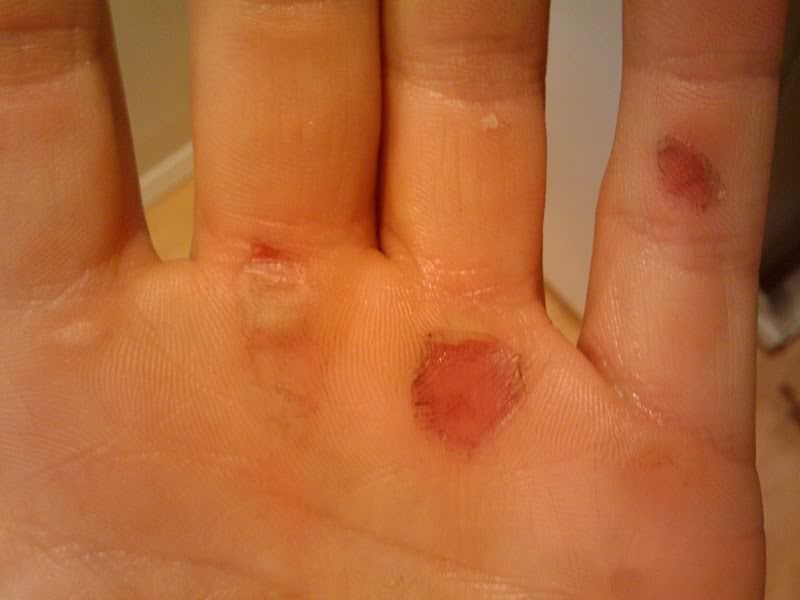
Now, in what way do these calluses cause a problem for the very exercise that triggered the body's natural defense mechanism to begin with? As one begins to lift the bar, one's grip is usually closed firmly around the bar (and definitely should be), as shown in the picture above. But during the course of a workout, a set of deadlifts, or even a single, heavy lift, one's grip can tend to weaken and begin to open up. To see what i mean, watch the deadlifter's left hand start to open up at about 23 seconds into the video below.
When the grip starts to open up like this, notice that the bar starts to slip downward out of the hand. And those calluses that develop toward the end of the palm, just below the fingers, they stick out a bit from the plane of the palm. So as the bar slips downward out of the hand, the calluses tend to get caught under the bar, which pulls them down toward the floor as the lifter struggles to pull the bar--using, of course, his palms--upward. Eventually, the skin between the callus and the center of the palm gives way, and you've got your blister. From the description of the video above: "callous [sic] tore off of left hand mid lift. Couldn't hold, +blood made it slip even more."
So how can we powerlifters avoid this problem? Yeah, some will just "man up" and deal with. Fine, go for it. I, however, am a wuss, and I want to prevent these blisters if at all possible. Others will choose to use equipment that allows the bar to be lifted without much gripping effort. Wrist straps suspend the bar from one's wrists, transferring the weight from the fingers and palm to the wrist, requiring little grip strength. Lifting hooks do basically the same thing. The problem with this approach is that they are not allowed in competition. Relying upon them too heavily will cause one's grip strength to lag behind; it won't matter in competition if your legs and back can lift 800 pounds but your grip can't lift half that.
When I started training a few months ago, I didn't understand what causes the blisters. In researching the problem, one of the solutions commonly suggested (which I'll get to momentarily) opened my eyes to what was going on, and once this dawned on me, I realized that the single most important thing we can do to prevent deadlift blisters is this: GRIP TIGHTLY! I now make it a point to try and be conscious of my grip throughout the entire motion, concentrating on gripping it as tightly as possible, keeping my hand closed firmly around the bar. A mantra just came to me: "If the bar don't slip, the skin won't rip."
But I'm also experimenting with the solution I came across which revealed to me this connection between calluses and blisters in the first place: filing the calluses down. The idea seems to be, if we reduce the size of our calluses, they are less likely to get caught under the bar as our grip weakens and opens up. Plus, the softer, smoother skin of filed calluses should allow the bar to slip over them more easily than the hard, rough skin of unfiled ones. The comments I read suggested pumice; the bath and beauty section of your local grocery store may have pumice (volcanic rock) stones for filing down rough skin.




0 comments:
Post a Comment